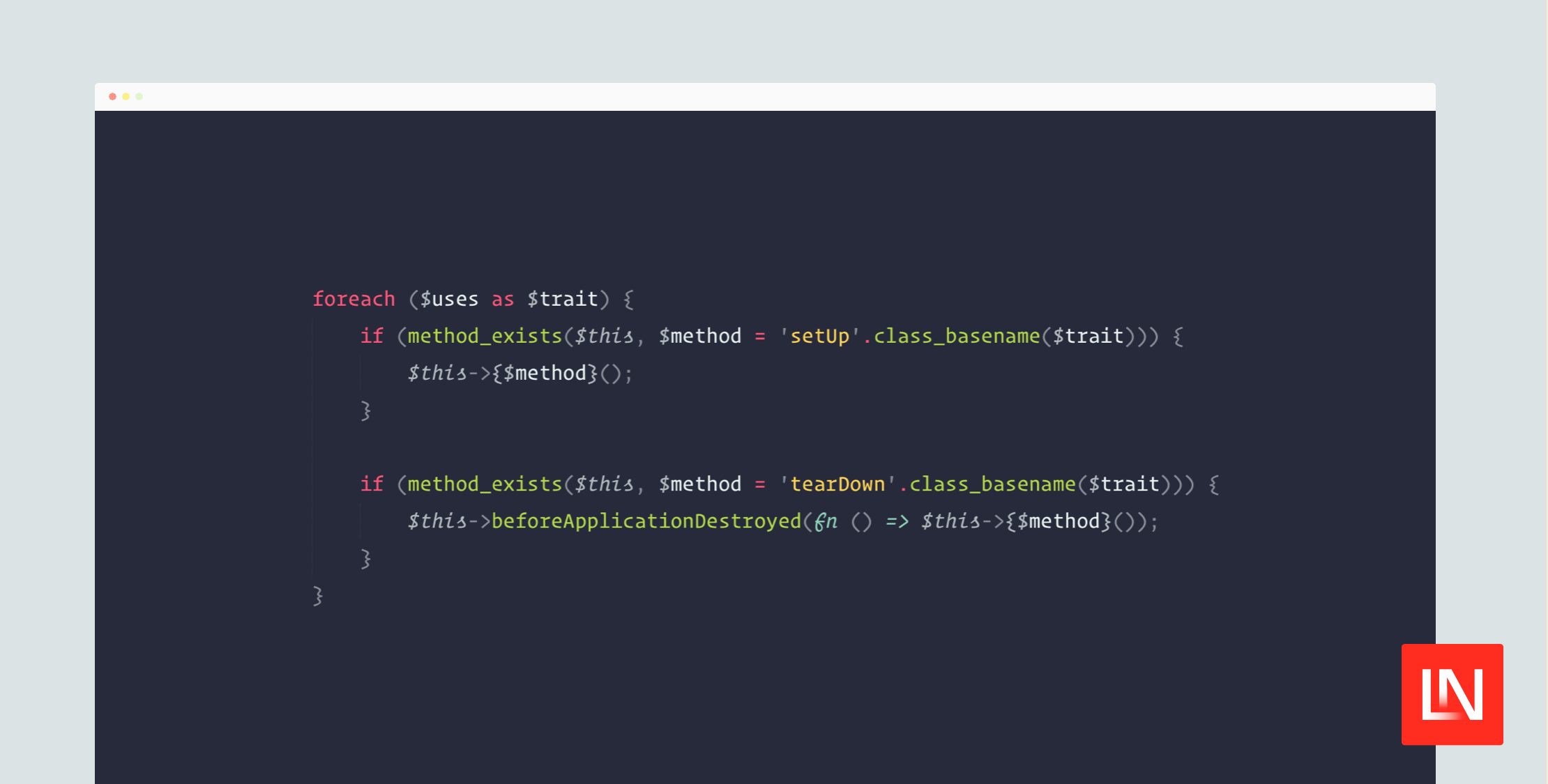The Laravel framework provides a bunch of helpful test traits that make our lives easier, such as migrating databases, setting up Faker, removing middleware, and more. When writing feature tests in Laravel, the base TestCase class inherits the framework's TestCase class. In this class, is the base setUp template is called in PHPUnit:
protected function setUp(): void{ $this->setUpTheTestEnvironment();}The setUpTheTestEnvironment() method—found in the TestCase's InteractsWithTestCaseLifecycle trait—does a few things:
- Clear resolved Facade instances
- Refreshes the application
- Boots testing helper traits
- Sets the
Modelclass event dispatcher instance - Marks that the setup has run
The part that I want to focus on is the setUpTraits() method, which recursively returns traits on the instance. This method includes some internal framework trait checks and calls methods on those traits if they're used:
if (isset($uses[RefreshDatabase::class])) { $this->refreshDatabase();} if (isset($uses[DatabaseMigrations::class])) { $this->runDatabaseMigrations();} // ... etcAt the end of the method, it loops through all the traits and checks for the existence of a setup/teardown method that matches the trait name:
foreach ($uses as $trait) { if (method_exists($this, $method = 'setUp'.class_basename($trait))) { $this->{$method}(); } if (method_exists($this, $method = 'tearDown'.class_basename($trait))) { $this->beforeApplicationDestroyed(fn () => $this->{$method}()); }}If you had a MyUsefulHelper trait on a test class, the method_exists check would look for these methods:
public function setUpMyUsefulHelper();public function tearDownMyUsefulHelper();What's neat about the trait setup methods is that you can avoid boilerplate code anywhere you want to use this trait in a test:
class MyTestCase{ use MyUsefulHelper; // This method is not needed if a `setUpMyUsefulHelper` method is defined.- public function setUp: void- {- parent::setUp();-- $this->initMyUsefulHelper();- }}If your application has useful helpers, setup code, etc., using these hooks can clean up your code, and you don't have to remember to manually initialize the trait's setup. For example, perhaps you have factory code in multiple tests that sets up users, permissions, and roles. Your setup code could be moved into a reusable trait that automatically sets everything up before each test.
Recently, I created a trait to interact with a Wiremock server that required some setup and teardown logic, such as defining custom mocked request/response pairs (and cleaning them up afterwards). I created an InteractsWithWiremock trait that automatically takes care of set up and reset automatically using Laravel's automatic setUp hook.
I love finding small nuggets like this in the Laravel framework code!










